 |
| April 16, 2013 | Volume 09 Issue 15 |
Designfax weekly eMagazine
Archives
Partners
Manufacturing Center
Product Spotlight
Modern Applications News
Metalworking Ideas For
Today's Job Shops
Tooling and Production
Strategies for large
metalworking plants
Precision metal bellows used as spring replacements in mechanical and electrical applications
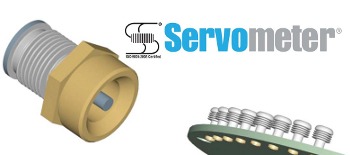
Servometer metal bellows are used for metallic hermetic seals, volume compensators, pressure and temperature sensors, flexible connectors, and countless other applications where quality, dependability, and long life are critical requirements. In this article, we evaluate the use of an electrodeposited metal bellows as a replacement for a metal spring in mechanical and electrical systems. The bellows offers various benefits to create a cost-effective, repeatable solution.
Electrodeposition process of bellows manufacturing
Electrodeposited bellows are manufactured by first machining a piece of aluminum into a mandrel that matches the internal geometry of the desired bellows. The mandrel is plated with precision layers of metal to the desired thickness. Each end of the plated mandrel is scored through the plating to expose the aluminum to define the end trim dimensions. Finally, the aluminum is chemically removed, leaving behind the precision thin shell of plated material that becomes the finished bellows.
Servometer's proprietary electro-deposition process allows the Cedar Grove, NJ, company to produce helium leak-tight bellows that are highly sensitive and responsive, with proven reliability.
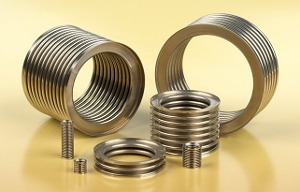
The responsiveness and the spring rate of a bellows is a function of the wall thickness. Thus, manufacturing metal bellows through electrodeposition makes it possible to produce bellows with very low spring rates, allowing for a maximum amount of deflection with a minimum of applied force. This capability, along with the helium leak tightness, yields a bellows that is highly sensitive and responsive to changes in pressure.
By comparison, springs are drawn from standard thick-gauge wire, require more force to achieve the same motion, and, by their nature, are not helium leak tight. Rubber and polyurethane bellows are usually very flexible, but they typically have limited cycle life and sealing capability in comparison to metal bellows. Mechanically formed (or hydroformed) metal bellows have limitations in the wall thickness, and cannot achieve the thinness as compared to deposited bellows. As a result, they cannot achieve the relative flexibility and responsiveness of the electrodeposited bellows.
"Electrodeposited nickel bellows typically provide just one-fifth to one-tenth the spring rate of hydroformed brass bellows of the same size," explains Servometer's director of engineering, Paul Hazlitt. "The amount of force required to compress them is especially low and stays consistent from one bellows to another."
Two for one
In certain applications, such as in an actuated valve, a metal bellows acts as both a seal to contain the pressure and a spring to dampen the actuation. The convolutions of the bellows allow proper flow of media within the assembly, whereas a coil spring could trap particles that could cause clogging.
In other cases, because the bellows has a defined spring rate (with the bellows sealed to atmosphere or filled with liquid), the bellows assembly will respond to changes in pressure or temperature, respectively. In this case, the bellows assembly itself becomes an actuator as it responds to changes in pressure and/or temperature.
Attaining a minimum expected cycle life can determine the success or failure of a product. Because electrodeposited metal bellows can be designed for "infinite" life, Servometer design engineers can design to maximize the life expectancy while meeting the application's requirement for spring rate and flexibility, in the required size envelope.
EXAMPLE: In a liquid dispensing application, a bellows was designed and manufactured 0.049 in. in diameter, .5 in. long, and with extremely thin walls. This design yielded a bellows with a spring rate low enough that the valve actuation would compress the bellows, yet high enough that the bellows could still overcome the nozzle pressure when dispensing. Additionally, the bellows needed sufficient spring force to shut the nozzle tip securely when the magnetic actuation force was removed.
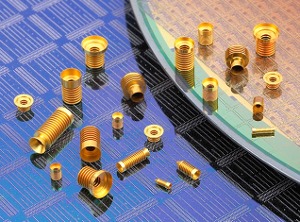
The bellows was assembled to the solenoid pin at one end and to the valve block at the other. Cycle tests at up to 350 Hz showed the metal bellows could successfully operate the nozzle valve accurately. Also, the liquid to be dispensed needed to be heated to lower its viscosity. The metal bellows was able to withstand the temperatures required to heat the liquid, without affecting its performance. Overall, the bellows reduced the number of components and size of the assembly, while it increased the product reliability.
Electrical spring replacement
In electrical systems, springs are commonly used as an electrical interface to connect devices that are not permanently installed. Precision metal bellows are a reliable alternative to springs for various applications.
The manufacture of a bellows electrical contact follows the same electrodeposition process for its construction as for an electrodeposited bellows. In order to increase conductivity, a layer of gold is plated over the bellows to ASTM B488. The actual shape of the bellows is a primary factor in design of the bellows. The signal can travel along the walls of the bellows rather than traveling the path of a spring, resulting in lower DC resistance, minimal self-inductance, and minimal insertion loss.
Probing for a solution
Bellows electrical contacts are an excellent solution for testing electrical circuits, from incoming inspection to final test. The miniature size and various shape capabilities of a bellows electrical contact allow it to pair with through-holes or pads. Soldering the bellows to a probe allows easier handling for manual testing operations.
EXAMPLE: When a semiconductor chip manufacturer needed to conduct electrical tests in its automated assembly line on miniature components, a bellows electrical contact end was employed. The bellows assembly was designed as less than 1 mm in diameter and 1 mm in length with a coned front end to complement the external geometry of the components being tested. The electrical contact was soldered to a probe and installed in the system. The bellows contact was able to compensate for offsets and vibration due to its flexibility.
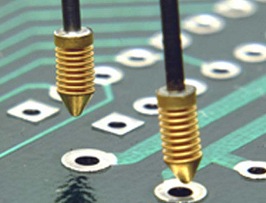
With a wide operating temperature range, the bellows assembly was able to withstand the various heating processes within the chamber as well as an ultra-high vacuum. With various liquids and gases being used within the chamber, the bellows electrical contact maintained media compatibility; the seamless design prevented media build up and contamination in comparison to the original spring or pin configuration.
About Servometer
Servometer was founded in 1957 when two engineers, Morris Holowachuk and Fredrick Kelly, decided to create an improved "servometer" for instrumentation and related industries. Finding only a limited market for their "servometer" design, the two men changed their business focus and developed and patented a unique method to manufacture miniature bellows. These ultra-precise, electrodeposited bellows would soon become Servometer's core product.
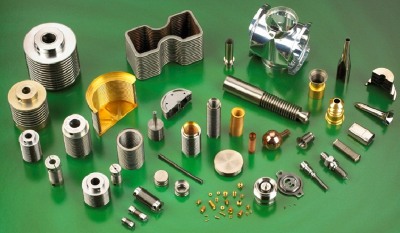
Servometer has applied its expertise in machining and electroforming to manufacture custom bellows and electroforms. With the high-strength, metal construction, Servometer was able to add flexibility to precision components by creating the bellows coupling. Servometer bellows have also found a home in the digital world. Gold-plated electrical contacts add offset capability, wide temperature operation, and minimal signal loss. Servometer has a portfolio of products to allow engineers to design solutions they never thought possible.
Want more information? Click below.
Servometer or email info@servometer.com
Published April 2013
Rate this article
View our terms of use and privacy policy
